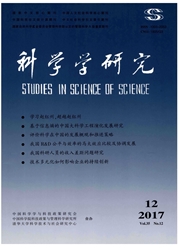

 中文摘要:
中文摘要:
本研究旨在探讨组织双元化构筑竞争优势的过程、特征与原因。本文以联想研发组织为案例研究对象,打开了中国研发组织双元化构筑竞争优势的“黑箱”,揭示了其构筑过程、特征、结果与演化路径,总结了组织双元化演化的过程模型,并从外部利益相关者——全球化竞争对手并购的角度,分析了复杂嵌套组织的双元化促进“以小并大”企业的融合,补充与丰富了组织双元化的理论体系,弥补了现有研究忽略企业外部利益相关者视角的不足。研究发现联想全球化成功的原因在于其复杂嵌套组织的双元化,并由此获得了竞争优势。本文也分析了联想吸收能力单极化的问题。实践意义在于指导中国企业通过研发组织双元化,获得可持续发展的创新能力与竞争优势。
 英文摘要:
英文摘要:
This research aims to take Lenovo R&D organization as a case study, to systematically explore evolution path of organization ambidexterity, building competitive advantage for the processes, characteristics and reason. This research find that the key success fac- tor of Lenovo for globalization is its competitive advantages built by its R&D organizational ambidexterity. This paper summarizes the process model of ambidexterity building competitive advantage. In addition, this article analyzed the reason of complex nested organiza- tional ambidexterity promotes the fusion after emerging market corporate mergers and acquisitions developed multinational companies. It also reveals the literal problem of absorptive capacity for Chinese manufacture. The practical significance of this study is to guide Chi- nese enterprises to achieve organization ambidexterity, to obtain sustainable development competence for innovation and competitive ad- vantage in globalization.
 同期刊论文项目
同期刊论文项目
 同项目期刊论文
同项目期刊论文
 Developing information processing capability for operational agility: implications from a Chinese ma
Developing information processing capability for operational agility: implications from a Chinese ma 期刊信息
期刊信息
